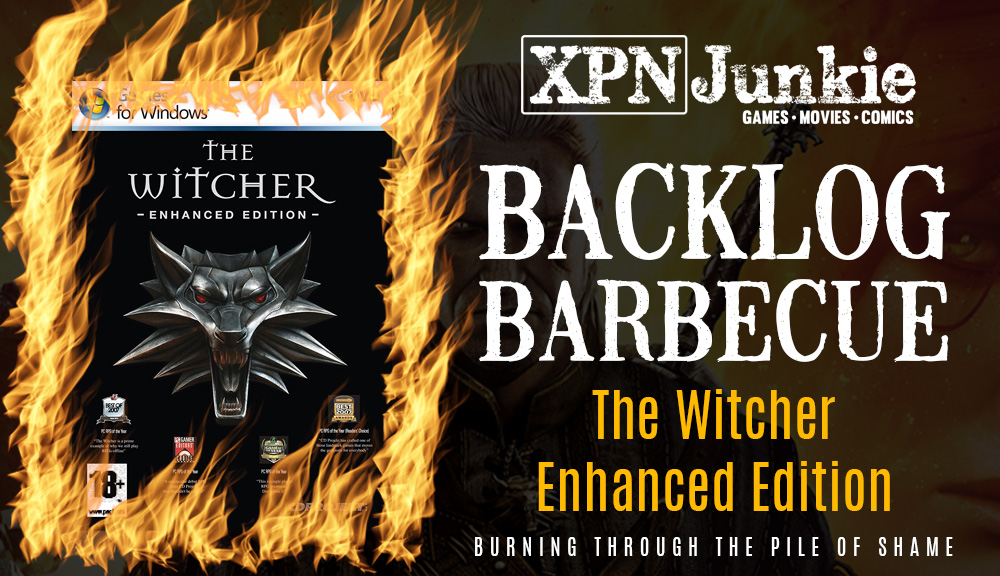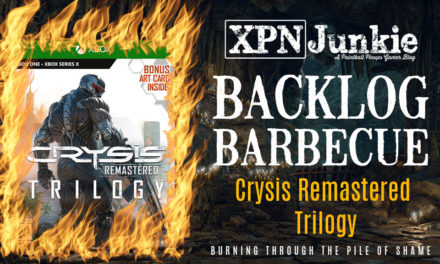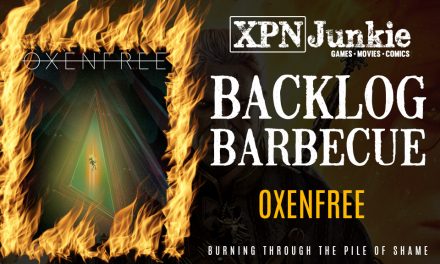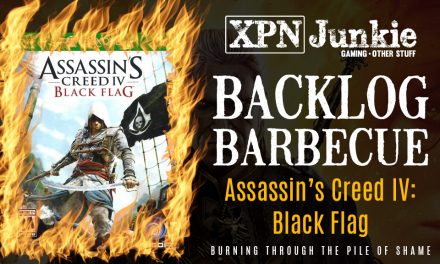Did you know that The Witcher turned 10 this past October? I didn’t either. Even though Geralt of Rivia is like the Polish Burt Reynolds, over here on the western side of the lake, the general population is largely unfamiliar with the ol’ White Wolf. We don’t really hear much about it when important milestones such as this are reached.
While I still think “White Wolf” would be an excellent name for a brand of vodka, I can’t help but hand it to Geralt for still being such a badass after a decade. It’s also a strange, and sad, thing to admit, but despite my familiarity with the games and the character, I still had yet to actually complete any of the games in the Witcher trilogy. That’s gaming blasphemy in some circles!
It was a problem I set out to remedy. I do own all three of them, after all. Maybe it was time I removed them from the Pile of Shame (which, despite my best efforts this past summer, still continues to grow.) I loaded up my old copy of The Witcher: Enhanced Edition which… made my PC sound like a 747 taking off inside a trash can. While my PC isn’t the greatest gaming rig on the planet, surely it couldn’t be getting pushed that hard by a decade old piece of software? In truth, my fans had been ever so gradually running louder and louder, despite my best efforts to keep them dust-free.
I figured it had to be my GPU, and upon running some temperature monitoring software, I saw that my graphics card was idling about 20 degrees celsius above what it should be. So before I began playing The Witcher, it was time for a little emergency surgery. I dismantled my Radeon assembly and pulled out a fully clogged heat sink. Awesome! After marveling at ATI’s genius design decisions (that heat sink was a serious bitch to get to), I re-pasted the GPU and put all the shit back together again. It’s almost as if I used to do this for a living!
So with that hassle out of the way, I was finally able to dive in to The Witcher without worrying my graphics card would pull an Igni and spontaneously combust.
The Witcher
I had to keep reminding myself while playing this game that while CDPR might be considered one of the best in the business at master crafting RPG’s, they didn’t start out this way. It shows as The Witcher, while a good game, is pretty rough around the edges. In retrospect, the game struggles with its own design. The point-and-click, timing sensitive combat is great and easy when fighting one or two enemies, but can get more than a bit frustrating in later battles when Geralt is surrounded by both humans and monsters and despite all the frantic mouse-clicking you can muster, he just refuses to do anything. It’s easy to get stuck in a stun loop, or have his light attack on one enemy canceled out by a heavy enemy behind him. Sometimes his group attack is far less effective than just absorbing the damage from surrounding enemies in order to pick off a certain one a little quicker. The six (yes, six) battle styles bring a small amount of trial and error to the battles, and saving often was a requirement I sometimes (maddeningly) forgot to do. It’s easy enough to determine which style of fighting is needed to defeat an enemy, but sometimes the best laid plans go out the window when Geralt doesn’t execute his combos the way he should, either by getting canceled out due to an enemy’s block or parry, or by Geralt himself just becoming a bit unresponsive. There were many times when I would click, then click again, then keep clicking, just waiting for Geralt to begin his attack. For whatever reason, he would just stand there. This was all a minor issue until the final two chapters of the game, when all out war breaks out and the number of enemies being encountered at once skyrockets.
Speaking of the final two chapters, the game does have some serious pacing issues. The first few chapters are extremely slow, with Geralt falling into the age-old role of glorified errand boy. There is a lot of talking, and a whole lot of running back and forth. The convoluted quest system will lead you on more than a few wild goose chases, as you seek to conclude quests that cannot actually be concluded until after a certain point, sometimes even a completely different chapter. The game doesn’t tell you this, so if you’re OCD like me and don’t like loose ends, you’ll just have to grit your teeth and force yourself to move on. CDPR began their gaming careers working on localizing Baldur’s Gate games in Poland, and it shows and they rely heavily on conversation choices to drive their story. This is done well in some cases, and no so much in others. Sometimes the choices laid out before you are clear in their consequences, and sometimes you’ll have to choose a reply and hope for the best. Romance cards, and even certain quests can be missed out on just because Geralt said the wrong thing.
I couldn’t tell if the pace of the game picked up after chapter two, or if it sped up simply because I was done chatting and doing the bare minimum to progress the story. I even stopped caring about the Witcher contracts, mainly because finding (and affording) the monster books required to properly complete each contract was also becoming a chore.
The Witcher works best as a series that lets you play at your own pace. It’s why The Wild Hunt was so successful. The lore and land that Geralt inhabits is really interesting, and as a player I want to explore this environment. The first entry here doesn’t let you do this. The game is separated into chapters, and each chapter only contains a small portion of the map to explore. Most of the time, there is literally nothing else to do except push on with your quests. The diversionary dice game isn’t enough to make Vizima seem like a place that goes about daily life. Nobody there seems to do anything but wander around.
I know I’m being harsh. To be fair, this was CDPR’s first internally developed game. Making an entirely new game from scratch was completely new to them, and for what they succeeded in with The Witcher was quite a remarkable feat. It’s not a bad game. In fact, for the time, it was quite good. It still is. Parts of the game drag; Chapter two is the worst. Other parts seem rushed. The ending is drawn out way too long, with familiar villain tropes slapping you in the face the entire time. But in the end, it was a game I was glad I played through. The story introduces an intimidating number of characters to keep track of, but by the end, Geralt has clear enemies and allies, and the ending leads directly into Assassins of Kings (which, incidentally, makes a whole lot more fucking sense now.)
If you’re a new fan of the series, if Wild Hunt piqued your interest and you’re looking to go back and see just where Geralt’s story begins, I recommend playing The Witcher. Just keep in mind that the game plays much differently than its sequels, and is quite vague in its objectives sometimes. It’s a different kind of RPG than you might be used to, but if you have any experience with any of Bioware’s older games, such as Knights of the Old Republic or Baldur’s Gate, you have a pretty good idea of what to expect.
Also, expect Dandelion and Zoltan to look downright hideous.
Things to Note:
– Don’t bother trying to win at dice poker.
– Do NOT spend the 5,000 orens on the merchant’s armor.
– Make sure your wife’s not around when talking to the Dryad.





